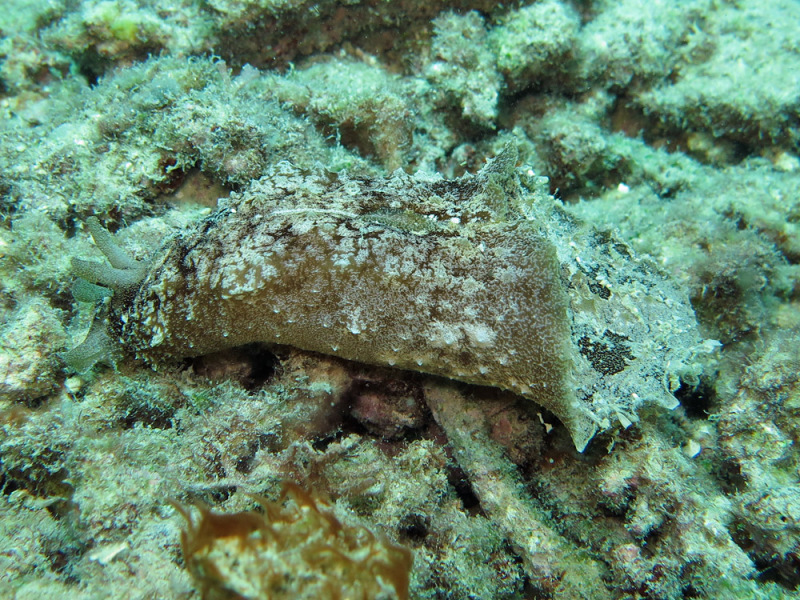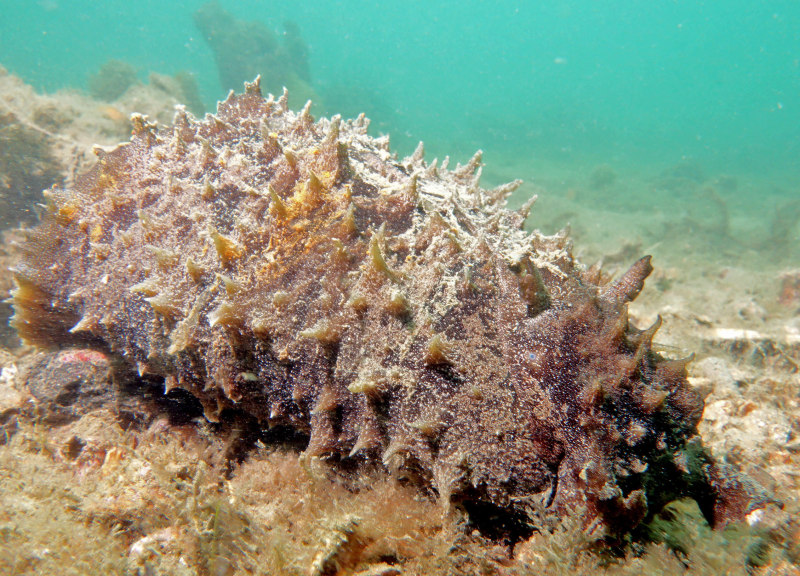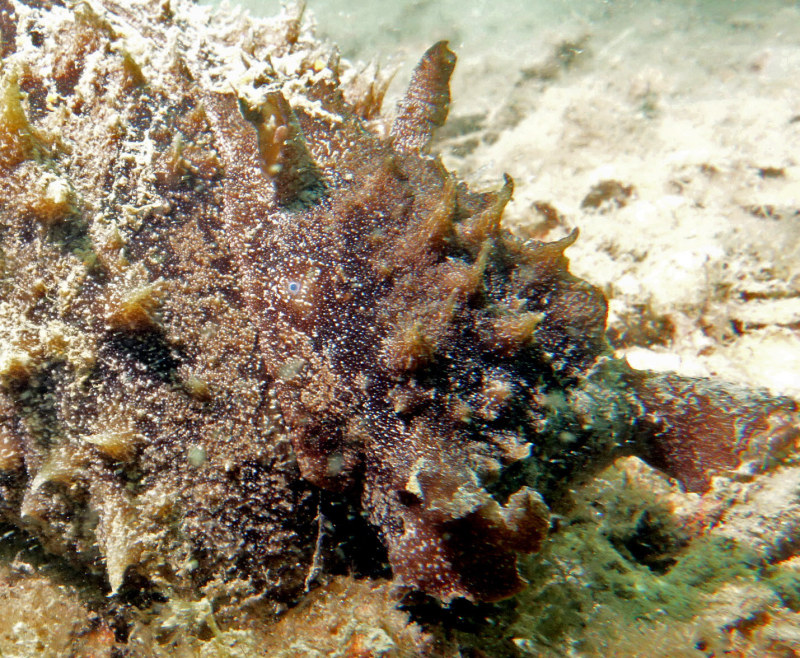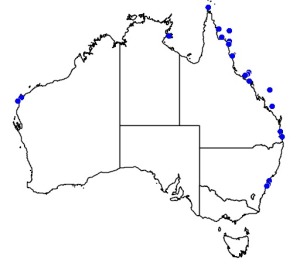�
�

©Anne: Dolabella auricularia about 10 cm long at North Direction Island, as found on rubble, showing the distinctive sloping disc-like shield at rear.
�
���
Dolabella auricularia
Eared Sea Hare

©Anne: Dolabella auricularia about 10 cm long at North Direction Island, as found on rubble, showing the distinctive sloping disc-like shield at rear.
Kingdom
Animalia
Phylum
Mollusca
Class
Gastropoda
Order
Anaspidea
Family
Aplysiidae
Genus
Dolabella
Species
Dolabella auricularia
Colours
Distinguishing features
It can be recognized by a flattened disk on the posterior surface of the animal. This species can be found with soft pustules, leading to a rather knob-like appearance. It has a short, blunt head. Its body is covered with tubercles and skin flaps. The inner shell has a typical earlike form. (Wikipedia)
Size
- Up to 40 cm (Length of specimen)
Synonyms
Distribution
Distribution and habitat preferences
This sea hare lives in areas that are sheltered from rough currents. They will often hide in seagrass, sand and mud, a favoured place to live. (Wikipedia)
Behaviour
It gives off purple ink when disturbed. (Wikipedia)
Diet
They feed on algae. (Wikipedia)
Web resources
References
- Klussmann-Kolb, A. and A. Dinapoli (2006). Systematic position of the pelagic Thecosomata and Gymnosomata within Opisthobranchia (Mollusca, Gastropoda) - revival of the Pteropoda, Journal of Zoological Systematics and Evolutionary Research, 44(2): 118-129. LIRS catalog number 1188.
- Robertson, R. (1981). List of shell-bearing mollusks observed and collected at Lizard Island, Great Barrier Reef, Australia, Tryonia, 4: 1-32. LIRS catalog number 403.
- Waegele, H., I. Burghardt, N. Anthes, J. Evertsen, A. Klussman-Kolb and G. Brodie (2006). Species diversity of opisthobranch molluscs on Lizard Island, Great Barrier Reef, Australia, In: Contemporary studies into the systematics and evolution of opisthobranch molluscs, (Eds. G. Brodie, S. Fahey and F.E. Wells), Records of the Western Australian Museum, Supplement 69: 33-59. LIRS catalog number 1036.



